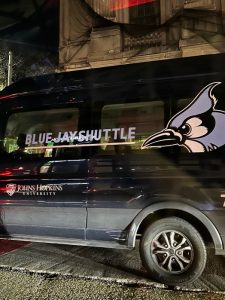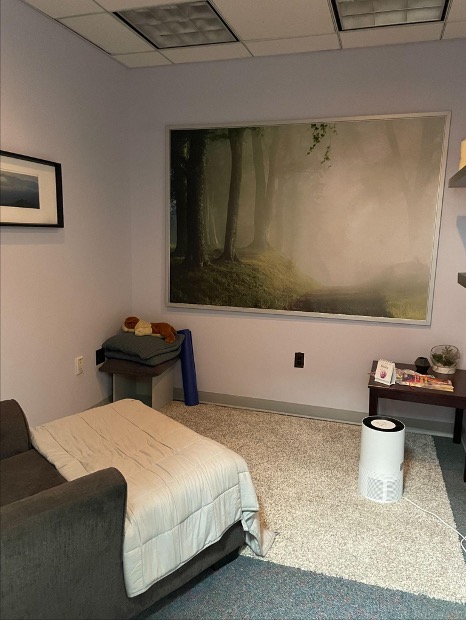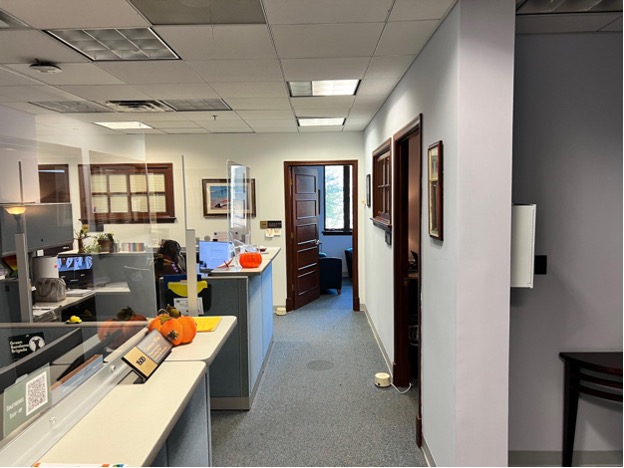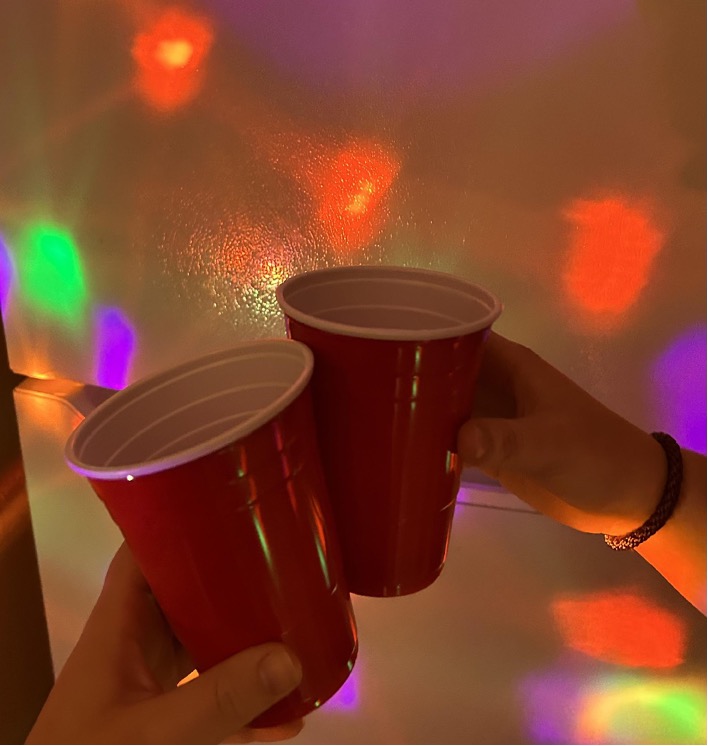
The following does not represent the views of Loyola University Maryland, the Greyhound, or Loyola University’s Department of Communication.
Have you ever been stuck outside Power Plant, Federal Hill, or Fells Point and seen the Blue Jay Shuttle picking up Johns Hopkins students thinking, “I wish Loyola did that” as you wait for your Uber home or around the city? If so, this article is for you.
Off-campus shuttling can significantly impact the student body positively by enhancing accessibility and convenience throughout the city. Baltimore is a great city, rich in history and culture, offering a wide variety of charming neighborhoods, great culinary options, and an amazing art scene that truly captures the spirit of Charm City.
But students like Jack Woods ‘25, say they often feel stuck on campus without a car.
“The feeling of being on campus when the only thing you want to do is explore the city you go to school in was overwhelming, since it felt like a barrier to exploring what Baltimore has to offer,” Woods said.
Navigating the city can be a challenging problem if you don’t have a car, and even then, it’s not always sufficient because parking can be hard to find. Furthermore, ride-share apps are convenient, but they can be expensive, leaving many of us stuck on campus instead of exploring the city.
“Oftentimes when I wasn’t able to get a ride to the grocery store from a roommate or friend, I was stuck using services like Instacart and oftentimes felt uncomfortable with someone else doing the shopping for me,” Woods said.
He felt that if there were more transportation options provided by the school and the students, they would be exploring the city more.
Before I get into possible things Loyola can do to improve students’ ability to get around the city, it’s important to remember there is the Baltimore Collegetown Shuttle, which Loyola is also not a part of, and then how the Johns Hopkins shuttle works.
The Baltimore Collegetown Shuttle is a free service that connects students, staff, and faculty at universities in the area such as Johns Hopkins, Notre Dame of Maryland, and Towson University. To ride, simply show your college ID. The shuttle stops at various locations including Penn Station, Johns Hopkins Homewood Campus, Notre Dame of Maryland University, Towson University, and Towson Town Center. On Sundays, it also stops at Towson Place and Kenilworth Shopping Centers. The service provides real-time tracking through text, online, and the TransLoc app.
I spoke to Raymond Infussi, director of parking and transportation at Loyola.
“We are still a part of the Baltimore college town network, we are just no longer a part of the shuttle; the Collegetown shuttle had very low utilization by Loyola students,” Infussi said.
The Johns Hopkins shuttle service operates a wide network of various campuses and locations in Baltimore. The daytime service includes ten routes connecting their Homewood campus with other Johns Hopkins properties just like Loyola. However, The Blue Jay Shuttle provides evening services with on-demand, curb-to-curb rides to specific service areas. This is all done with real-time tracking, and ride requests need to be made in advance, which can be made through the TransLoc app or website.

Personally, I know many others were under the same assumption that Johns Hopkins Blue Jay shuttle was just running late to busy areas for students. Will Daly ‘24 Felt this is something Loyola could mimic.
“It would be great If Loyola could do something like this, everyone would appreciate it, and it might even give some peace of mind knowing they have a ride home through the school instead of a rideshare app,” Daly said.
When speaking to Raymond Infussi, he made me realize The Blue Jay Shuttle is hard to compare between Loyola and Johns Hopkins because the campuses have different approaches to student housing. Loyola provides on-campus living for all four years if wanted and has an agreement with the surrounding neighborhoods to prohibit Loyola student rentals in houses immediately adjacent to Evergreen campus, while Johns Hopkins, due to limited owned housing, does not guarantee University housing beyond second year and pushes students into the surrounding community apartments and rental houses. This difference in housing policies influences their shuttle systems.
While expanding the shuttle service is one way to improve student mobility another approach is to add more zip car spots for students to use on campus. A Student zip car account is only $15 annually, making it very affordable for college students. Doing this would give students who don’t have a car on campus more access to the city and what it has to offer as well as necessities like grocery stores.
“Zipcar has one car placed on campus, in a designated spot at Newman Tower East. Before the pandemic, Zipcar had up to four cars placed at Loyola, two at Newman East and two at 5104 York Road. Zipcar solely determines the number of cars placed at any one location based on the utilization of the cars.”
“I wish I knew earlier how affordable Zipcar was, I feel like this is something that should be marketed more to students and would have made a difference in my experience at Loyola,” Daly said.
The first thing Loyola should do is join the Baltimore Collegetown shuttle. From there, Loyola should promote using Zip cars to students. The rise of students signing up and using Zipcars would cause Zipcar to add more spots around campus giving students more access to get around Baltimore. These steps would significantly improve students’ ability to venture off campus and do simple things like grocery shopping. Lastly, it would be great, but it doesn’t yet seem possible for Loyola to mimic the Johns Hopkins shuttle system.












































































































